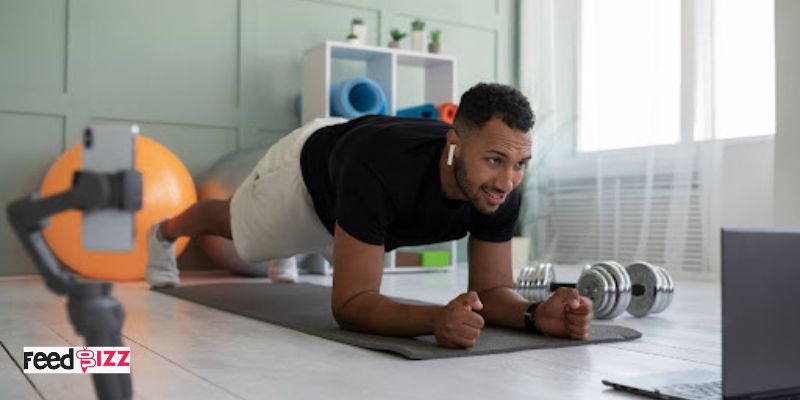Life in the city is simply full of advantages-exposure to all forms of cultures, unlimited food and career choices. However, in the case of fitness, the city life can also pose some challenges. Lack of space in the city, commute and the hectic lifestyle usually leaves the city residents with little time to focus on health. Luckily, you do not require a big home gym or hours on the fitness center to keep fit and well. With the right workouts which can fit in small areas, you will get a big result without the need to move out of your apartment or condo.
Why Fitness Feels Different in the City
In an urban environment, the challenges are not the same as in the suburbs or rural setting. To one, space is usually the greatest challenge. The apartments in large cities are generally small, and one cannot place large exercise machines such as treadmills or weight benches. Also, work, social life and commuting becomes hectic and the time spent on exercising is minimized.
This does not however imply that fitness has to take a back seat. The life in the city is also unique. Having a great range of fitness studios, outside parks and new workout applications, urban inhabitants can have their choice of creative methods of maintaining fitness. The trick is in the ability to select the appropriate exercises that would fit your time and your area capacity.
Small-Space Friendly Exercises That Work
Bodyweight exercises are your new best friend when you have no space to practice with machines and heavy weights. There is a myriad of exercises that work on almost no space, such as squats, push-ups, lunges and planks yet they develop strength, endurance and flexibility. You can achieve a complete body workout by building the circuits that mix these moves which take not more than 20 minutes.
Another better variant is high-intensity interval training (HIIT). HIIT is characterized by brief workouts that are of intense effort with intervals of rest. As an example, 30-second of jumping jacks and 15 seconds of rest, a few rounds repeated. This form of training is time-saving as well as enhances metabolism and is good in burning calories.
Yoga and Pilates are ideal in small apartments to those that want something that is milder. The two practices enhance both flexibility and balance and core strength and they are not dependent on more than a yoga mat to do so.
The Role of Studios in City Fitness
While at-home workouts are convenient, many city dwellers also benefit from nearby fitness studios. These spaces offer community, accountability and professional instruction, which can be harder to achieve when working out alone. For instance, visiting a pilates studio new york provides not only expert guidance but also an opportunity to escape the confines of your apartment while still focusing on fitness. Studios often specialize in maximizing efficiency, offering classes that fit into busy urban schedules without requiring hours of commitment.
This balance of home workouts and studio sessions can be ideal. You gain the flexibility of exercising on your own when time is tight, while also enjoying the motivation and structure that comes from group settings.
Making the Most of Your Environment
Life in the city has a certain benefit: it is accessible. Your playground can be the sidewalks, the parks and even the stair wells. Exercising outside by running or jogging is an excellent idea to do some cardio and it also gives you an opportunity to learn more about your neighborhood. The parks that are open to the community, or where you can practice yoga, sprint or join some fitness groups, are usually free and without any workout area.
Your apartment building itself can be considered a resource. Simple yet effective activities like using the stairs instead of lifts, walking to the errands instead of driving or engaging in a short burst of exercise in your balcony are the first step towards remaining active. City fitness is about being creative and maximizing on what is available.
Building a Consistent Routine
The major challenge in city life is usually consistency. Fitbit is easy to lose with all these distractions and demands. This is why it is necessary to create a routine. By setting up exercises in the same manner as setting up work appointments or parties, you will find it very difficult to miss out. Even brief workouts such as 10 minutes of morning stretching or 15 minutes of strength circuit after work can really add up when exercised consistently.
Consistency may also be supported using technology. With Fitness apps, you can have guided workouts, progress and reminder tools to stay on track. Others even enable you to become members of virtual communities whereby you can share your progress and get motivated together with others.
Balancing Fitness with Lifestyle
City life is based on equilibrium. The same way you keep a balance between work, social life and down time, fitness needs to be a part and parcel of your life as opposed to an obligation. You should select exercises that you like-it is a high-intensity HIIT training, relaxing yoga, or fun dance. Fun enhances compliance and compliance yields fruit.
Nutrition is also very crucial. Although it is easy to resort to takeout and fast food, the population of the city can enjoy the advantage of preparing healthy food in advance. Having healthy snacks in your bag pack will mean you will not backtrack your fitness goal because of hunger. Eating mindfully can combine with your regular exercising to make the most of the benefits of your small-space exercises.
Conclusion: Big Results Are Within Reach
Being in the city does not mean that you are restricted to fitness. It is possible to have some stunning results with creative solutions, even in the tiniest of apartments combining at-home and the occasional studio visits. With emphasis on consistency, capitalization of your environment and selection of exercises that suit your lifestyle, you will learn that it is not only that urban fitness is a possibility, but rather an enjoyable one.
The size may be perceived as some kind of restriction, yet you could experience the urge to make use of small space more carefully and consciously in regard to your well-being. Ultimately, it does not matter how large your work out space is, but what counts is the amount of effort and devotion you apply to each workout.









